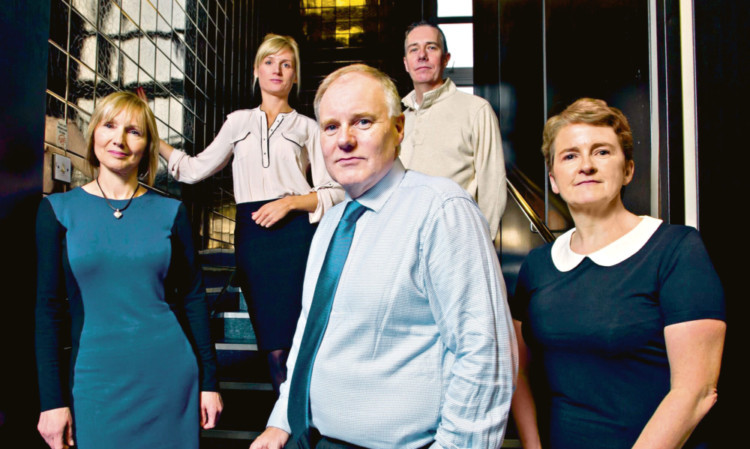
Top crime experts spend weeks in search of clues to bring killers to justice.
Michael Young has seen things nobody should ever have to see. He helped bring one of Britain’s most evil men to justice and often spends weeks in search of just one vital clue that could change the course of an investigation.
Michael is Scotland’s very own Mr CSI. But his work is a far cry from the TV show.
Now the efforts of Michael and his colleagues are being laid bare as never before. New three-part BBC series Crime Scenes Scotland: Forensics Squad has gained unique access to forensic scientists, pathologists and scene examiners.
It follows some of the most famous recent cases from murder scene to trial, showing just how the killers were caught.
Michael has come a long way from selling suits in Burtons to helping crack murders. He made the switch from retail 15 years ago and, with Scotland’s unenviable record as Western Europe’s worst per capita murder rate, there’s no shortage of work.
So, is at all like glitzy CSI? Or maybe Silent Witness? Or any of the endless TV detective dramas?
“You see the cops striding across a murder scene in high heels, munching a bacon sandwich,” sighs 46-year-old Michael. “Everyone else has a white suit on. I’d be one of those guys, the ones that never get speaking parts.
“The suit’s there for a reason. We have to keep a sterile corridor so we don’t bring anything from outside in, or don’t lose some vital bit of evidence by taking it out.
“It’s to protect you, too. I’ve never been to a murder in a clean house.
“I don’t actually watch many of those shows, I prefer Come Dine With Me. Those crime shows are just entertainment and wrap it all up in 45 minutes. I wish that was the case!”
Michael’s own family back in Cumbernauld, wife Maureen and nine-year-old son Anthony, are kept well away from the grim and grisly realities of his working day.
“I never take it home and I never talk about it,” he confides. “Anthony’s more interested in being a fireman and was really unimpressed that my police car didn’t have proper lights.
“It’s my work and no matter what I see it’s nothing to do with them.
“You’re often walking into rooms where bodies are lying but you can’t let it get to you. If it’s a murder scene the police will have cleared the whole house. But if it’s a suicide or a sudden death the first thing I always ask is if there are any family members around. You have to be really sensitive about anything you say and do. It’s hard enough for them without you making it any harder.”
In his decade-and-a-half on the job, advances have let him find fingerprints that would never have been possible before. And he can take images that give cops and jurors a panoramic walk-through of the murder scene.
Other experts can analyse blood splatters and DNA evidence can trap a killer from the tiniest trace.
Sometimes, though, it can be something more obvious for Michael who can clock up to a dozen scenes a day, from car crime to housebreaking, robbery to assault.
“I did one murder scene in the south side of Glasgow where we had to check for prints all the way up from the close to the flat,” adds Michae.
“On the inside of the door I found an earprint and an expert testified that it had come from the killer. He’d been listening at the door before he fled the scene and that helped get the conviction.
“You remember the ones that are different. Sadly, too often it’s a domestic murder or the usual Glasgow gangland ones of young boys stabbing each other.
“I can see why people find it interesting but it’s definitely not glamorous.”
Michael was the first police crime scene examiner there after the discovery of the body of Angelika Kluk at a Glasgow church a find that would eventually snare serial killer Peter Tobin.
Angelika had been raped and killed by Tobin, later discovered to be a multiple murderer responsible for the deaths of Vicky Hamilton and Dinah McNicol.
“It was clear we were dealing with murder, so it was decided not to remove the body that evening and I did all the photographs before returning as part of the forensics team.
“I don’t mean to sound impersonal, but you have to be detached and view it just as a crime scene. At that time there was no way of knowing it would turn out to be Tobin or that we were dealing with a serial killer.
“Although Vicky was before my time in the job, she went missing not far from where I live. I remember her photo and her sister talking about the effect her disappearance had on the family.
“It was good to feel that you were part of a team finally able to give them some closure.”
Crime Scenes Scotland: Forensics Squad starts on BBC One Scotland on Wednesday at 10.35pm.

Enjoy the convenience of having The Sunday Post delivered as a digital ePaper straight to your smartphone, tablet or computer.
Subscribe for only £5.49 a month and enjoy all the benefits of the printed paper as a digital replica.
Subscribe